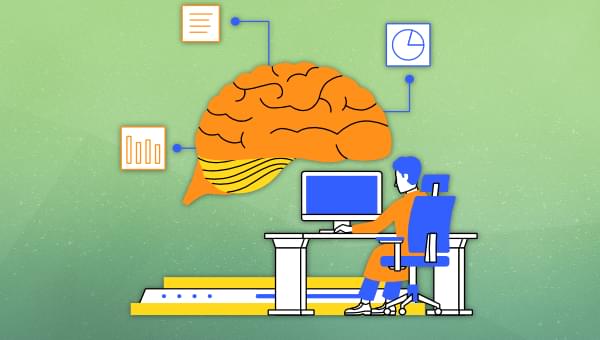A global survey of anti-fraud professionals conducted by the ACFE and SAS reveals an incredible enthusiasm for generative AI, but previous reference studies suggest a more challenging reality. Generative AI has captivated the public’s imagination, and its power and promise seem poised to impact all facets of society. It is not surprising, therefore, that 83% of fraud-fighting professionals plan to add this technology to their anti-fraud arsenal in the next two years, according to the latest Anti-Fraud Technology Benchmarking Report by the Association of Certified Fraud Examiners (ACFE) and SAS. The 2024 report is the third installment of a global research study initiated by the ACFE and SAS in 2019. This latest edition reflects the perceptions of nearly 1200 ACFE members surveyed at the end of 2023. Survey data reveals key trends in the evolution of fraud fighting since 2019. These include: Interest in artificial intelligence (AI) and machine learning (ML) is higher than ever. Nearly 1 in 5 professionals in this field (18%) currently have AI/ML among their tools to combat fraud. Another 32% plan to adopt these technologies in the next two years, a peak since the study began. At this rate, the use of AI/ML in anti-fraud programs will almost triple by the end of next year. However, the adoption of AI and ML is always lagging behind expectations. Despite fervent interest, the adoption of AI and ML for fraud prevention and detection has only grown by 5% since 2019. That figure is well below the anticipated adoption rates revealed in the 2019 and 2022 studies (25% and 26%, respectively). While the use of many data analysis techniques has stalled, the application of biometrics and robotics in anti-fraud programs has steadily increased. The use of physical biometrics has risen by 14% since 2019, now cited by 40% of respondents. One in five respondents (20%) reported using robotics, including robotic process automation, compared to 9% in 2019. The use of these technologies is notably higher in banking and financial services, with half (51%) using physical biometrics and a third (33%) using robotics. “The accessibility of generative AI tools makes them incredibly dangerous in the wrong hands,” said John Gill, president of the ACFE. “Three out of five organizations plan to increase their anti-fraud technology budgets in the next two years. How they invest these funds will determine who will take the lead in what has become a technological arms race with criminal enterprises. It’s an uphill battle considering that, unlike fraudsters, organizations face the added challenge of having to use these technologies ethically.” “Explosive interest in advanced analytics techniques alongside much more modest adoption rates demonstrates the complexities of scaling the AI and analytics lifecycle,” said Stu Bradley, Senior Vice President of Risk, Fraud, and Compliance Solutions at SAS. “It also underscores the importance of choosing the right technology partner. AI and machine learning are not simple plug-and-play applications. However, their benefits can be more easily realized by deploying modularized solutions across the spectrum of risk management on a single AI-driven platform. That is SAS’s approach with SAS Viya, cloud-native and language-agnostic.” Explore trends by industry, geography, and more In addition to the benchmarking report, SAS’s online data dashboard allows users to analyze survey data by industry, geographic region, and company size. Respondents work in 23 sectors, mostly in banking and financial services and the public sector (with 22% of respondents each), but also in professional services (13%), insurance (5%), healthcare (4%), manufacturing (4%), technology (4%), and education (4%), among others. Their business organizations span the globe and range in size from less than 100 employees to over 10,000. Read the report and visit the data dashboard at SAS.com/fraudsurvey to examine anti-fraud technology trends across industries and sentiments around: Data analysis techniques used by organizations to combat fraud. Risk areas where organizations apply data analytics to monitor fraud. Data sources organizations use in their anti-fraud initiatives and their perspectives on data sharing consortia. The prevalence of case management software and digital forensics/electronic discovery analysis. Challenges organizations face in implementing new anti-fraud technologies. How generative AI is affecting organizations’ anti-fraud programs. The future of Generative AI: Boom or Bust? Will the use of generative AI in anti-fraud programs skyrocket in line with the passionate intent of the respondents? Or will real-world challenges, such as budget constraints, data quality, and skills gaps, slow its expected rise? Only time will tell, but organizations cannot be too cautious when adopting generative AI and other AI technologies. Responsible innovation requires organizations to not only ask “could we?” but also “should we?” “The use of generative AI in anti-fraud initiatives could play a significant role in identifying anomalies, trends, and clues in large volumes of data with minimal concern for resources,” said one respondent. “However, the organization will need to ensure that the right guidelines are applied to minimize errors and biases.” “Generative AI has made great strides in recent years, so it’s no surprise that organizations are incorporating it into their anti-fraud initiatives,” said ACFE Research Director Mason Wilder. “As a society, we are still learning all the advantages and disadvantages of using the technology, but more organizations are starting to take that first step. It will be interesting to see how quickly adoption occurs, both inside and outside the workplace, as technology continues to advance over time.” About the Association of Certified Fraud Examiners (ACFE) Based in Austin, Texas, the ACFE is the world’s largest anti-fraud organization and the leading provider of anti-fraud education and training. With over 90,000 members, the ACFE is reducing corporate fraud worldwide and inspiring public confidence in integrity and objectivity within the profession. For more information, visit ACFE.com. About SAS SAS is the leader in analytics. Through innovative software and services, SAS empowers and inspires customers worldwide to transform data into intelligence. SAS gives THE POWER TO KNOW®. SAS and all other SAS Institute Inc. product or service names are registered trademarks or trademarks of SAS Institute Inc. in the USA and other countries. ® indicates that it is registered in the United States. Other brand and product names are trademarks of their respective companies. Copyright © 2021 SAS Institute Inc. All rights reserved.
Source link





















